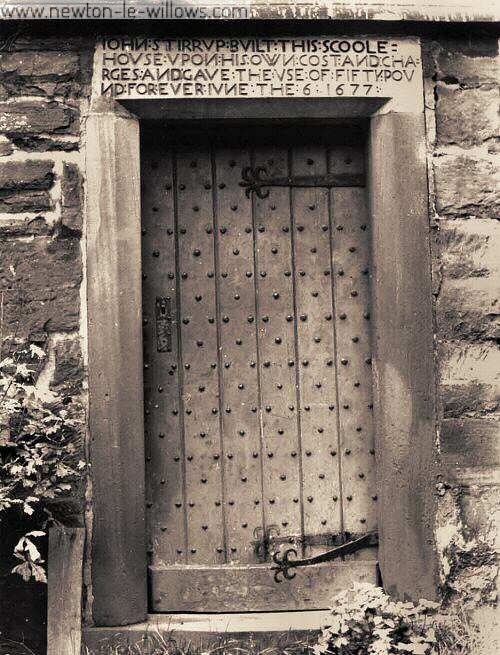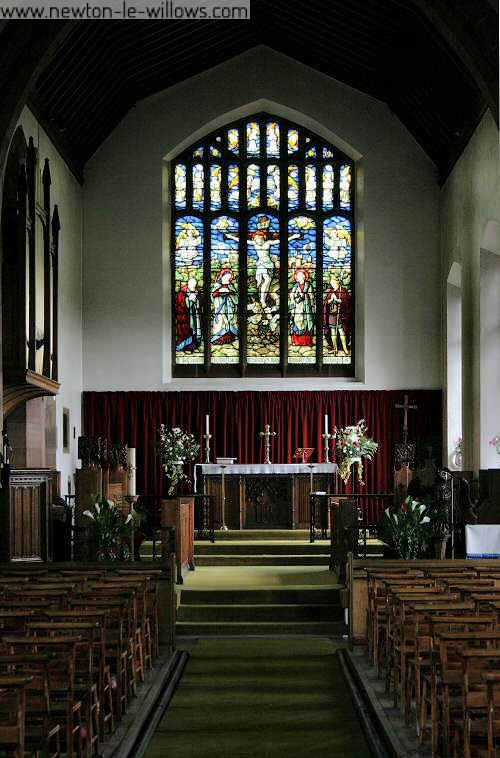This building, probably the oldest in the township, was formerly a moated grange, vestiges of the moat being visible in the boyhood days of some of our septuagenarian residents. It is said to have been the abode of the serjeant (or bailiff) of the lord of the manor, a post of great importance in olden days, and corresponding to that of sheriff of more recent times. Its very probable that the Serjeants (or Sergeants as the name later became), who resided at Crow Lane Hall in the 15th, 16th, and…
Read More >>Category: Newton-le-Willows
Newton Cricket, Bowling, and Tennis Club
On the April 13th, 1858, a meeting was held in the Assembly-room, High-street, Newton-le-Willows, for the formation of a cricket club, W. Mercer, Esq., in the chair. A sum of upwards of £50 was announced as subscribed in the room. Officers were there-upon appointed, with W. J. Leah, Esq., as patron ; W. Mercer, Esq., president; Dr. J. W. Watkins, secretary ; and George McCorquodale, Esq., treasurer. On May 30th following the opening game was played. The ground was in excellent condition, and there was a good attendance of members.…
Read More >>Southworth Burial Mound
Southworth Burial Mound Take Myddleton Lane (the ‘Eastern avenue’ off the Winwick mound) out of Winwick towards Culcheth and it will lead down the ley line towards Croft where it becomes Southworth Lane as it passes the ancient Southworth Hall over the M6 motorway. In the fields to the right Victorian Historical Journals from the Warrington Historical Society mention there may have been the burial mounds though these are now lost being ploughed flat, and in the field to the left on the Newton side, between the motorway and Southworth…
Read More >>St Peters Church
Below are a few images that show some of the many changes made to St Peters over the years. St Peters Church (approx 1835) This picture of St Peters is from about the year 1835 and clearly shows the Church without its bell tower, also visible in this image, standing to the left side of the church is the obelisk which was later removed to the centre of Earlestown Market, where it still stands. St Peters Church (approx 1910) In this lower of the two images you can clearly see…
Read More >>Dean School, Newton-le-Willows
Details relating to its early history and later domestic use were discovered during the course of this research. Information about its builder and later residents will also be considered, along with some details about the Dean School Trust set up by the original builder of the property. THE FOUNDATION OF THE SCHOOL Dean School, or Dene School, was founded in 1677 by John Stirrup.(1) The building was erected on a piece of barren land.(2) The date of construction is cited on an inscription that was over the front entrance to…
Read More >>Castle Hill by the Rev. Edmund Sibson
The following account was written in 1843 by the Rev. Edmund Sibson, once Curate at Winwick, and after- wards Vicar of St. Thomass, Ashton-in-Makerfield, and is entitled “An Account of the Opening of an Ancient Barrow called Castle Hill, near Newton-in-Makerfield, in the County of Lancaster” This Photo of Castle Hill is from the 1916, Vol II, History of Newton in Makerfield, by J H Lane. edited and coloured from the original by Steven Dowd Mr Bainess Description. “At the distance of half a mile from and to the N.…
Read More >>Newton Glass Works
This Shows the location of the Glass Works In relation to Crow Lane, The Glass works (red) stands on the site where we know have the Fire Station, Opposite is the Brick Works, Windy Bank House (blue) is still standing, but all of the Glass Works or its Railway line are both long gone. This as far as I can tell is the only image that exists that shows anything of the Glass Works, you can see to the right of this image, in the distance the bottle shaped kilns…
Read More >>Newton-le-Willows
To my heart there is no dearer spot upon earth, Than Newton-le-Willows, the place of my birth! Oh! The world has allurements to tempt us to roam, But it cannot supply the endearments of home. Dear Newton! Ill sing of thy sylvan retreats, Of thy lanes, and thy tree-shaded dwellings and streets, Of thy bridge oer the brook with its vista of bloom– A vision of beauty and store of perfume! I will sing of thy ancient, historical hall Near the old ruined mill with its miniature falls The strangers…
Read More >>South Lancashire Conservative Association
The South Lancashire Conservative Association has scarcely been founded three years, and yet during that short period it has enrolled as members all the talent, wealth, and influence of that portion of the palatinate from whence it takes its name. To perpetuate the society a building for the accommodation of its members has been erected since the last anniversary dinner, which is at once the most prominent object in the town of Newton, and we trust will be a lasting monument of the good old English feeling which raised it.…
Read More >>Newton Hall : Archaeological Excavation
I tried as best I could to get video of Mark Adams giving details of what they had found in their excavation, and some video of Stan & John Boydell explaining the layout and uses of the various buildings; Please remember these clips are not edited at all, i have about 2 hrs of different clips from different days that i managed to visit the site, and I hope that when it’s all put together, I will end up with a little fly on the wall type documentary of the…
Read More >>St Peter’s Mission & All Saints Church, Crow Lane
To the Members of the Church of England dwelling at the Earlestown end of the Parish of St. Peter, Newton-in-Makerfield. DEAR FRIENDS, For your benefit we propose to hold. during the coming Winter and Spring, in the large room of the Mill Residence in Fairclough Street, to be entered from the Mill Yard by a new staircase 1. Divine Service every SUNDAY EVENING at 6-30; and also every THURSDAY EVENING at 8 o’clock, for which Prayer Books and Hymn Books will be supplied. 2. Sunday School every SUNDAY AFTERNOON from…
Read More >>Newton in 1745
At this period the wages of an agricultural labourer were 10d per day without food, and 5d if his master provided him with meals. Carpenters and masons received ls 6d per day. The wants of the people, however, were few, and food was cheap, and a shilling had greater purchasing power than it has in the present day. In the early part of the 18th century the manufacture of woollens and of silk was encouraged, to the detriment of cottons and calicoes, and made rapid strides. Probably about this time…
Read More >>Newton-in-Makerfield : yr 1825-35
NEWTON IN MACKERFIELD. NEWTON IN MACKERFIELD is a small Borough Town and Chapelry in the Parish of Winwick, and in the Hundred of West Derby; 5 miles N. of Warrington, and 7 miles S. of Wigan. This Borough contains 275 houses, occupied by 289 families, consisting of 1643 persons. Of these families 56 are employed chiefly in agriculture, 221 in trade,” manufactures, or handicraft, and the remaining 13 are either engaged in professional pursuits or unemployed. The rental of the lands, messuages, and other buildings in the township, according to…
Read More >>Sites of Interest East of Newton
Sites of Interest to The East on Newton-le-Willows Site number 01 Site name Winwick to Golborne Line NGR SJ 5948 9484 to SJ 5977 9535 Site type Railway Period Post-medieval HER number MHER SJ 5994/16 Designation Sources GMAC 1995; Wardell Armstrong 2001; Ordnance Survey 1893c Description The railway was bnilt in the late nineteenth century to connect the Liverpool and Manchester railway line (Site 02) with the Warrington to Preston route. It first appears on the 1893 Ordnance Survey maps and thereafter on all subsequent Ordnance Survey…
Read More >>McCORQUODALE & CO. LTD. 1846-1937
THE following appeared in a newspaper published in 1846: “The capacious building at Newton, on the north side of the Liverpool and Manchester Railway, known until recently as the “Legh Arms Hotel” is being converted into a general printing office.” A printing office in a village like Newton, however humble in pretension, a year ago would have been considered one of the greatest wonders of the age. Wonders do, however, occasionally appear, and one of the greatest we Know of is the conversion in such a place, of a building…
Read More >>











